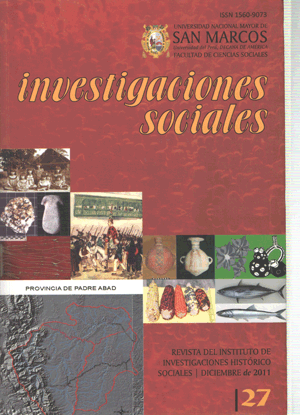Bourbon, liberal and Incas in the Andes of Huanuco, XVIII and XIX centuries
DOI:
https://doi.org/10.15381/is.v15i27.7668Keywords:
Huánuco, social movement, Huamalíes, power, Independence, Llata.Abstract
In this paper we try to reconstruct the historicity of a regional space, the political life of a set of social actors in their role of builders of a singular significance and a cultural horizon that allows them to assume –for example– a model of social representation (Junta de Gobierno) and increase the possibility to establish a new socio-ethnic autonomous power. In order to understand the sense of direction of this social movement, we work in reconstruct the economic situation, the thinking and the social forms that were assumed by the urban and rural groups that coexisted inside of a political Bourbon model. The struggles of these groups that were looking for a new configuration of the Bourbon model caused them to take up arms using violence against the institutional symbols but also focus in the resistance under negotiation mechanisms, alliances and slogans of the imminent arrival of the «Ynga Castelli» using the route of Monzon and Pozuzo. Our intention is to synthesize series of investigations and present another reading or reassess about meaning and nature of Huánuco’s social movement in 1812.Downloads
Published
Issue
Section
License
Copyright (c) 2011 Cesar Espinoza Claudio

This work is licensed under a Creative Commons Attribution-NonCommercial-ShareAlike 4.0 International License.
AUTHORS RETAIN THEIR RIGHTS:
a. Authors retain their trade mark rights and patent, and also on any process or procedure described in the article.
b. Authors retain their right to share, copy, distribute, perform and publicly communicate their article (eg, to place their article in an institutional repository or publish it in a book), with an acknowledgment of its initial publication in Investigaciones Sociales.
c. Authors retain theirs right to make a subsequent publication of their work, to use the article or any part thereof (eg a compilation of his papers, lecture notes, thesis, or a book), always indicating the source of publication (the originator of the work, journal, volume, number and date).













